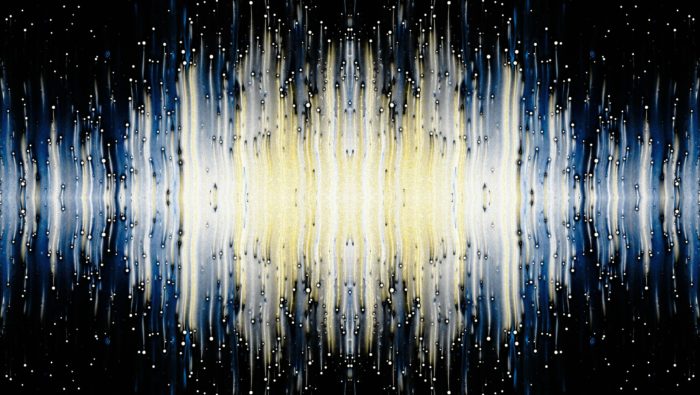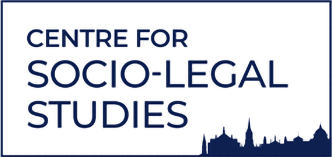
Audio-visibility and the Law

Audiovisual technologies are reshaping the law from outside in and inside out. Electronic media and tools for sound and image have created new evidentiary objects, from mobile phone recordings to dashboard and body-cam footage, and CCTV and surveillance videos. Alongside such forms of digital witnessing in everyday life, audiovisual technologies have also transformed what it means to testify and make claims inside the courtroom. Recording, broadcasting, and livestreaming alter how people may make themselves heard and seen by the law and by the general public. But these technologies operate within existing dynamics of power that amplify certain voices and experiences over others. What does it mean to be audible as well as visible to the law?
The law has always regulated sound, from the acoustic design of courthouses to rules of decorum about who can speak, when and how. Sound can be used as a technique of discipline, such as a witness being strategically interrupted during cross-examination. It also maps hierarchies of authority, with defendants at times unable to hear the proceedings as sound is channelled primarily to and from the bench.
Technology further captures sound in, and broadcasts it out of, the courtroom, making proceedings more accessible and reshaping outcomes and understandings of legal process. One example is the 1963-64 Rivonia trial in South Africa, in which Nelson Mandela and nine other anti-apartheid leaders faced the death penalty for the charge of fomenting violent revolution. In April 1964, Mandela famously delivered closing remarks in his defence for three hours. While Mandela’s speech and global reaction to the Rivonia trial were well-documented at the time in writing, it was not until decades later that researchers discovered audio recordings of the trial. These recordings brought to life Mandela’s words, the sound of his voice, with measured pace, pauses, shifts in cadence and timbre building tension and emphasis. As Mandela concludes with the words that he is prepared to die for his ideals, an audible gasp can be heard from spectators in the courtroom. Access to this audio revealed, for the first time, the shock resonating from within the South African legal system.
Socio-Legal scholars also remind us that the use of audiovisual technology is never neutral. Research shows that camera angles and framing may influence viewers’ perceptions of witness credibility, by emphasising certain interactions between people or focusing on the face of one person. James Parker writes about norms of ‘microphone discipline’ at the International Criminal Tribunal for Rwanda, underscoring that those with less power often enjoy less familiarity and comfort with courtroom audio technology (2015, p.188). Technology mediates the experience of being in court, and as Kamari Clarke and Sara Kendall note, is itself mediated through layers of human interpretation.
The spaces in which sound and image circulate are also never neutral, conditioning how people may hear, see, and interpret within them. In the U.S. case of State of Wisconsin vs. Rittenhouse, the defendant was charged with intentional homicide for shooting three people with an assault rifle – and killing two of them – during demonstrations and counter-demonstrations around racism and police violence in August 2020. The defendant claimed self-defence and his highly publicised trial become a cause-célèbre for right-wing activists. During trial, the presiding judge’s mobile phone rang multiple times, with the song ‘God Bless the USA’ as its ringtone. Although the song is a well-known campaign anthem for Donald Trump and was performed at his presidential inauguration, the judge did not instruct the jury to ignore it. Instead, the court left the song unacknowledged and seemingly unheard, though U.S. judicial ethics expressly prohibit political statements and activities by judges that may affect perceptions of impartiality. The potential for bias created by this context-laden song is evidently problematic, but the failure to address it within the courtroom suggests that the jury was to understand that the judge’s political leanings were irrelevant and the song was to have no formal meaning for the purposes of the trial, as if it had never sounded at all. Since the trial was televised, the judge’s ringtone was broadcast nationally, further amplifying the acute sense of political divisions surrounding the trial. The dynamics of power within the courtroom allowed the song to play, even while its meaning was treated as inaudible and irrelevant.
Another recent case, in the Republic of Guinea, illustrates the stakes of audio-visibility for vulnerable witnesses and shows how sound and video in court can be mobilised and interpreted in radically different ways. The Procès du massacre du 28 Septembre 2009 is a criminal case against an ex-president and his regime, charged with orchestrating mass political and sexual violence in 2009. The case has been televised and livestreamed in Guinea. Rape victim-witnesses were allowed to testify in closed session, but the court violated these special measure protections in February 2023, by requiring the first witness to appear publicly and confirm her identity before the cameras were instructed to stop running. Weeks later, another witness affirmatively made the decision to give her evidence before the full court and media, stating that she wished to testify publicly before her nation. While court procedures undermined the anonymity of the first witness, the second witness claimed her own appearance before the cameras as fundamental to her rights and demands for justice.
As these examples show, audio-visibility refers to what the law can hear and see; as well as when, where, and how claimants for justice may choose to or feel able to make themselves heard and seen. Sara Ahmed writes that ‘To hear with a feminist ear is to hear who is not heard, how we are not heard’ (2021, p.4). Listening and watching closely allows us to perceive how sound and video intensify and at times re-shape power, authority, agency, and access in and out of the courtroom, in ways both intended and not. Audio-visual technology may exacerbate inequities and lead to the violation of rights, as in the Guinean case; and it may also reveal to the public what the court cannot and will not acknowledge, as in the examples from South Africa and the U.S. The proliferation of these technologies challenges us to attune our senses so that we may better hear and respond to law’s sounds and its silences.

